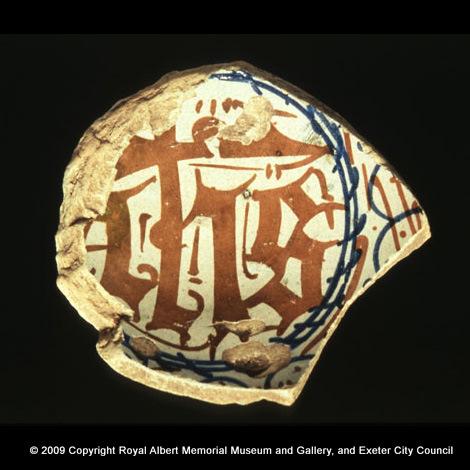A fragment of a Valencian lustreware dish
Back to Time Period
It was the Islamic world which discovered and developed the art of making lustreware. When it was seen in northern Europe it was often greatly prized. In the 15th century the most important source of such wares for English households were kilns in Valencia in southern Spain. The fragment, from the centre of a dish, was found in the Dissolution deposit of the Franciscan Friary at Colleton Crescent. It shows in lustre the sacred trigram IHS (Iesus Hominum Salvator - Jesus the Saviour of men); its presence at a friary may show it had a sacred use. The fragment is attributable to the Mature Valencian Lustreware style of c. 1425-1475.
Acknowledgments: RAM Museum Exeter Archaeology



















